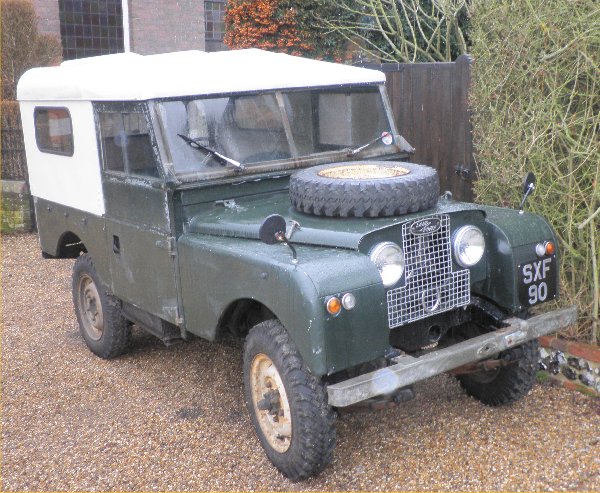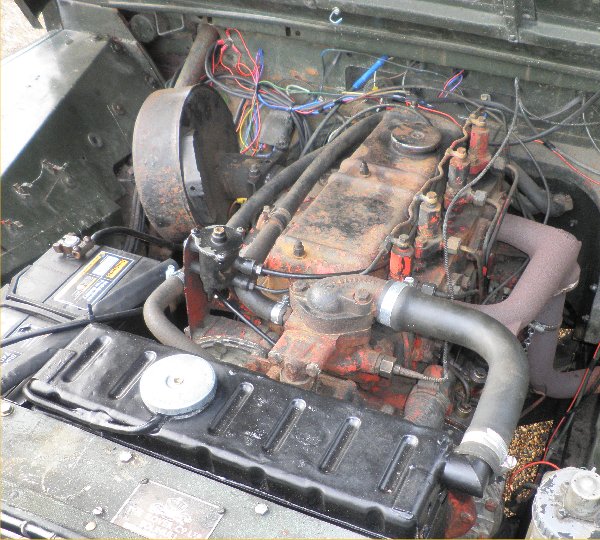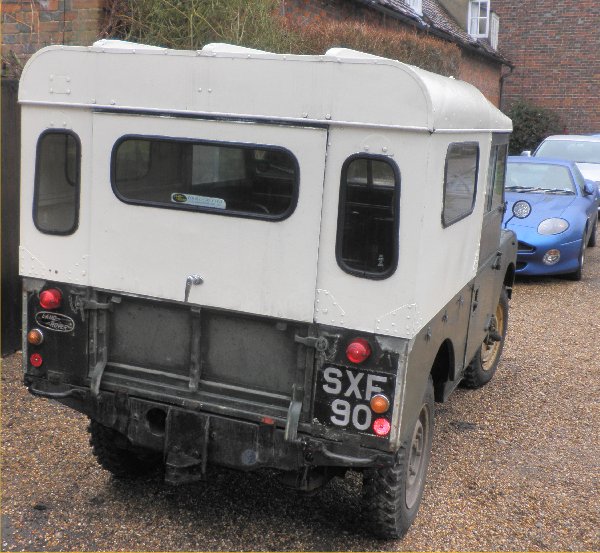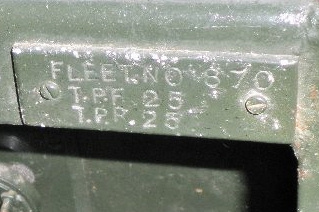

Reported sold on eBay 2009. Other details unknown at the time.
New owner now (1/11) David Stevens from Hertfordshire. David wrote:
I just fancied the idea of owning an old Series 1 to use locally. Definitely NOT off road and NOT a mint one, because it would become too precious. Just one to drive down the narrow lanes of Hertfordshire and into the hedges if necessary.
Through a friend of a friend, I heard about a Series 1 being restored in Northampton. SXF 90 had just been fitted with a 3200cc Perkins Diesel from an old tractor, which although very noisy (as my neighbours would testify) seems to go well. Some Series 2 front panels replaced with Series 1 bits. It came with a hardtop and a hood, and oversized wheels and tyres (which I replaced). It arrived on a trailer, on 25th September 2010, with a year's MOT. I was told it spent many years on an estate in Northamptonshire as a taxi for shooting parties.
The front number plate is on the nearside, although the 4 holes exist on the offside. On closer examination the front panel has a split, hidden by the repositioned plate!

The Perkins Diesel engine
David says that the hardtop has evidence of an aerial mounting point above (and slightly behind) the driver's head, and possibly a similar hole on the nearside front wing. The rear windows either side of the tailgate are not original, being the tapered shape from a Series 2/3 hardtop. There are other plated holes in the hardtop which don't correspond with any Home Office modifications, and are probably later. There are the holes in the hardtop (and not the lower body) which correspond to the station board fixings, so there's every confidence that this was a hardtop from new.
This is further confirmed by Barry Holliss' book 'The Green Machine' which gives (for once) quite a bit of detail on an individual vehicle. He says that SXF90 was a Command Car, and was posted to Sidcup in Kent (where I went to college!) It later went to LFB (London Fire Brigade?) The entry then says "(Fleet E/CmdC 10)/H23 (Sidcup)"
Elsewhere he explains that ' E/CmdC' was the AFS abbreviation for a Command Car, and such vehicles were "A light 4 wheel drive vehicle (ie Austin Gypsy or Land Rover) usually equipped with RT equipment. Used as an officer's staff car, Reconnaissance Unit, or a towing vehicle for a Field Telephone Trailer." I would suggest the first is appropriate in this case, and the fact that it stayed with the LFB shows that it's an AFS vehicle rather than a CD. (BUT Barry gives 91 as CD, whereas the present owner thinks it was AFS... so you can't be totally sure.)
The front edge of the bonnet has the holes associated with the fitting of amber flashing 'emergency' lights, so my guess is that this might have been an AFS officer's car that would rush to emergencies (flashing the lights), as my own experience with 870 seems to suggest that CD Reconnaissance vehicles (which moved at a sedate pace checking for radiation) weren't fitted with them.

Looking at the rear of the vehicle, the rear lights have been changed (from pork pies) and amber flashing indicators fitted. Positioning one on the number plate is unusual! At the front, the amber indicators have been placed on the shaped 'plinths' where the side lights originally sat, and the side lights have been moved in.
Finally, David asked:

To the right of the steering wheel on the dash, is an engraved plate saying "FLEET NO. 870 TPF 25 TPR 25" Any ideas?
I would guess "Tyre Pressure Front 25/Rear 25"... 25psi is correct for a Series 1 on normal tyres. The Fleet No could be from the LFB? I don't know — it doesn't correspond with any of the extra information in Barry's book.
[Note that from SXF81 to 93 the registration letters and chassis numbers follow in sequence — the longest run where this happens in the list.]
[To add (or alter) information on this page, please contact me on sxf@teeafit.co.uk.]